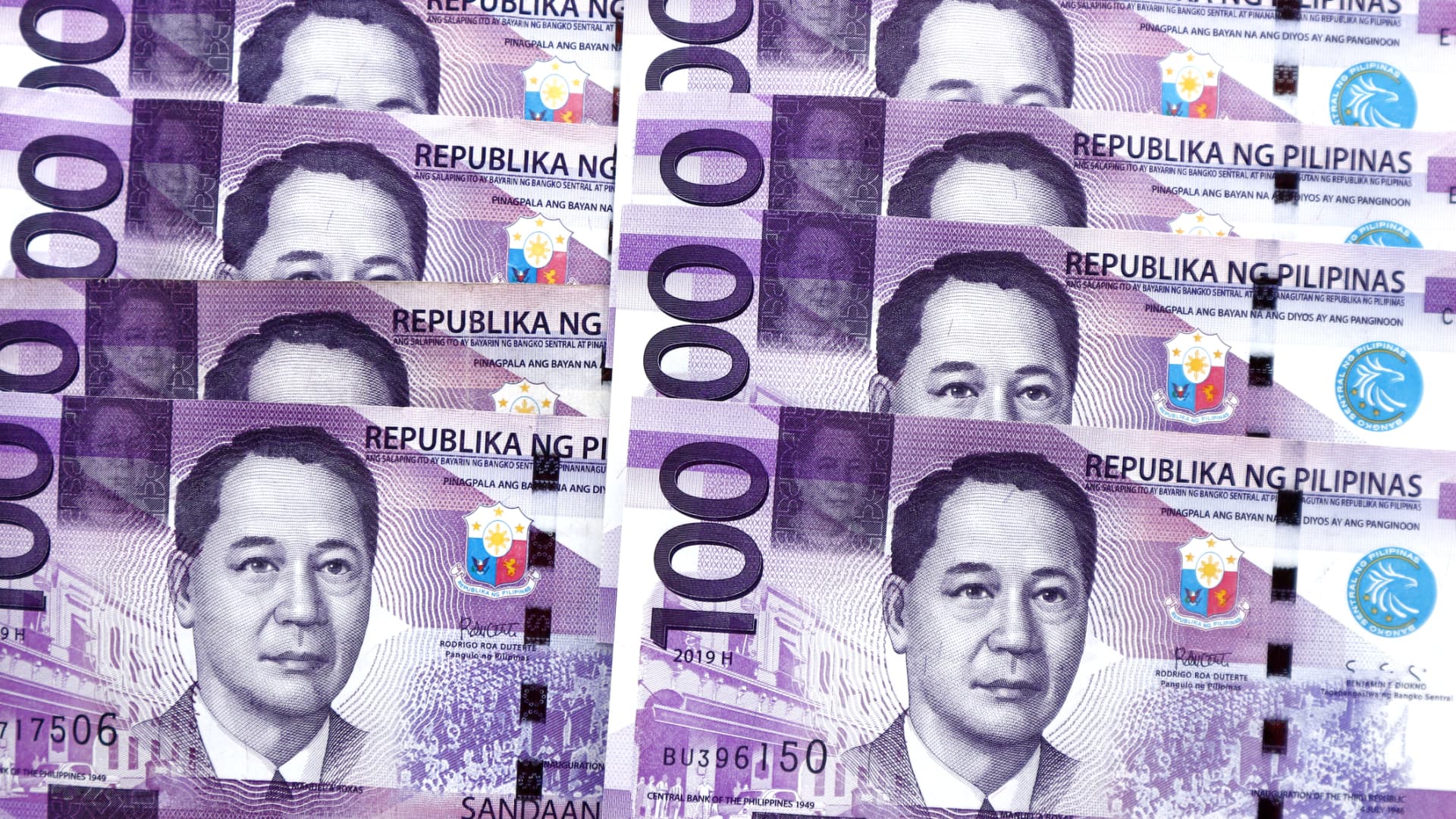
The weakening of Philippine currency the peso combined with a current account deficit will make rising inflation a feature of the economy in fiscal year 2022, according to an expert.
Jun Pinzon / Eyeem | Eyeem | Getty Images
A weakening peso, a widening current account deficit and rising inflation will put pressure on the Philippine central bank to hike interest rates when it meets on Aug. 18, an economist told CNBC’s “Street Signs Asia” on Tuesday.
“[With the economy growing] there has also been double-digit spending on capital machinery and raw materials, pushing the trade deficit to about $5.7 billion. That is going to put additional pressure on the peso to weaken,” senior economist covering the Philippines at financial company ING Nicholas Mapa said.
That weakness will continue to feed inflation ahead of the central bank’s policy meeting, pressuring the Bangko Sentral ng Pilipinas to raise rates.
Inflation is currently at 6.1%, but Mapa said ING sees it accelerating to 7.2% by the fourth quarter. He explained this is why “the central bank [is] finally sounding a little more hawkish.”
Mapa noted, however, “the Philippines central bank has a long five-week wait until we can actually start hiking policy rates again.” He said he does not expect an unscheduled, intermediary rate hike before the central bank’s meeting.
The economist said inflation in the Philippines “is here to stay mainly because there are second round effects kicking in,” pointing to rising wages and transportation costs over June.
He predicted that inflation will remain high for the rest of the year, unless oil prices come down and offer a reprieve in the second half. The Philippines imports all of its crude oil, which has risen dramatically in price in recent months. Mapa also said the crude oil import bill contributed to the widening trade deficit.
The economist also noted the new government of Ferdinand Marcos Jr. revised its growth target downwards to 6.5%, which he said indicates Manila accepts higher inflation will cut into growth in the second half of the year.
“However, there’s a countervailing force in … that the economy is reopening so we’re likely to see more capital machinery come in as well as raw materials as construction activity comes back to life,” Mapa said.
While the Philippines would see very strong growth in the first half of the financial year, with first quarter growth clocking in at 8.3%, he predicted higher inflation will likely weigh on the second half.
“2022 will be a year of two halves … the fiscal picture will not contribute to a good number in the second half of the year,” he said.
